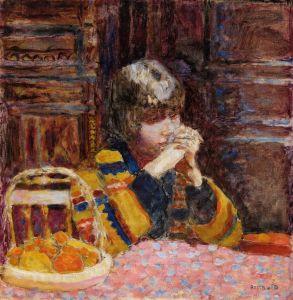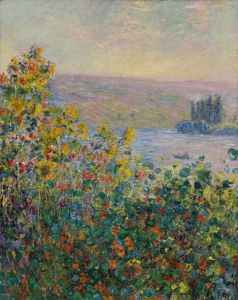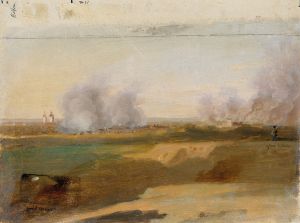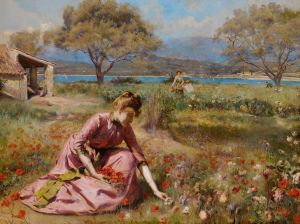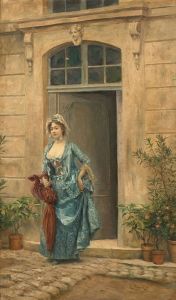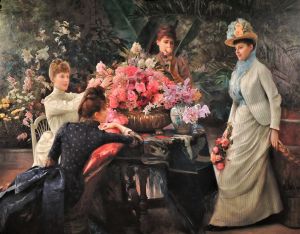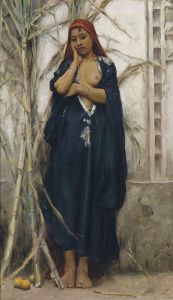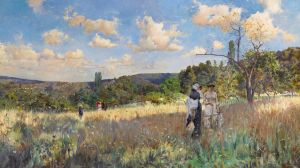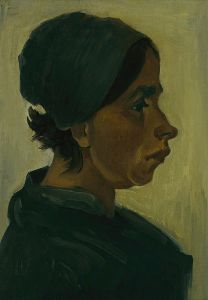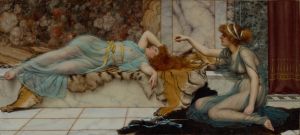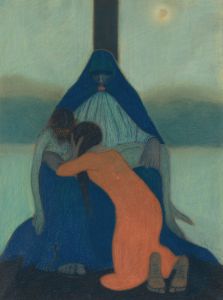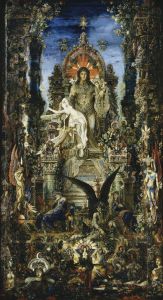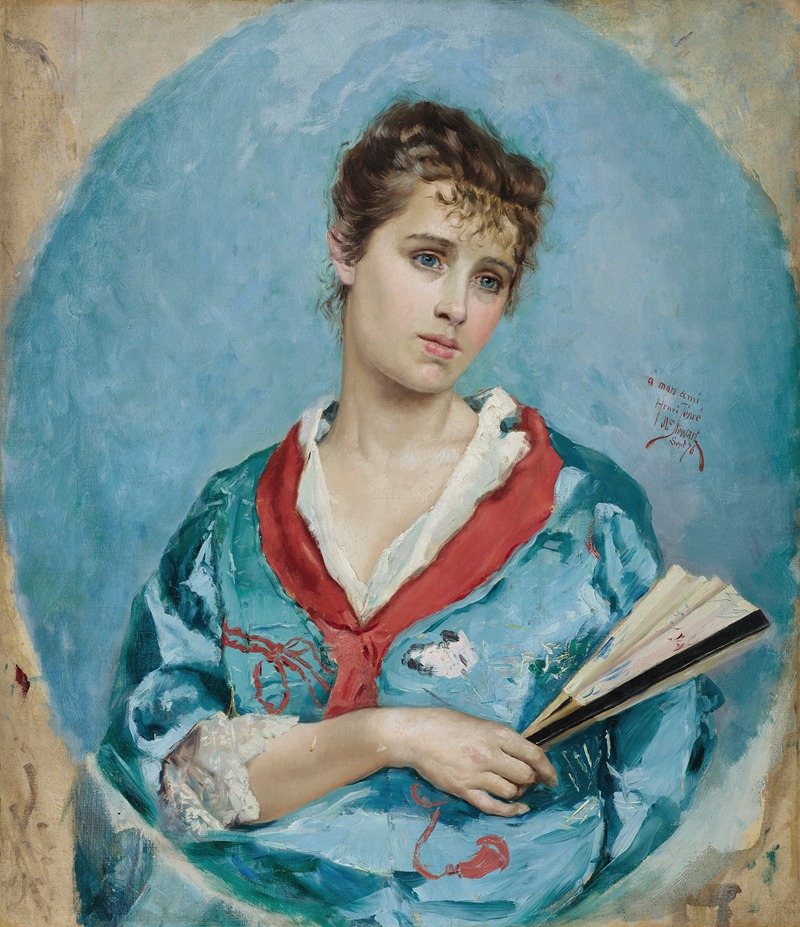
Reverie
A hand-painted replica of Julius Leblanc Stewart’s masterpiece Reverie, meticulously crafted by professional artists to capture the true essence of the original. Each piece is created with museum-quality canvas and rare mineral pigments, carefully painted by experienced artists with delicate brushstrokes and rich, layered colors to perfectly recreate the texture of the original artwork. Unlike machine-printed reproductions, this hand-painted version brings the painting to life, infused with the artist’s emotions and skill in every stroke. Whether for personal collection or home decoration, it instantly elevates the artistic atmosphere of any space.
Julius LeBlanc Stewart (1855-1919) was an American artist known for his luxurious and detailed paintings, often depicting the high society of his time. One of his notable works is "Reverie," which exemplifies his skill in capturing the elegance and opulence of the late 19th century.
"Reverie" is an oil painting created by Stewart in 1885. The painting showcases a young woman seated in a lavish interior, lost in thought. The title, "Reverie," suggests a state of dreamy meditation or musing, which is effectively conveyed through the subject's relaxed posture and distant gaze. The woman is dressed in an elaborate gown, indicative of the fashion of the period, and she is surrounded by luxurious furnishings, including richly patterned textiles and ornate furniture.
Stewart's attention to detail is evident in the meticulous rendering of the textures and materials in the painting. The intricate patterns of the woman's dress, the sheen of the fabrics, and the play of light and shadow all contribute to the overall sense of realism and depth. The artist's use of light is particularly noteworthy, as it highlights the delicate features of the woman's face and the sumptuousness of her surroundings.
"Reverie" reflects Stewart's fascination with the lifestyles of the wealthy and his ability to capture the subtleties of human expression and emotion. The painting is a testament to his technical prowess and his keen observational skills. It also provides a glimpse into the social milieu of the time, offering viewers a window into the world of the elite.
Stewart was born in Philadelphia but spent much of his career in Paris, where he became associated with the American expatriate community and the broader European art scene. He studied under the renowned French academic painter Jean-Léon Gérôme and was influenced by the works of contemporary artists such as John Singer Sargent and James McNeill Whistler. Stewart's paintings were well-received in both Europe and the United States, and he exhibited regularly at the Paris Salon and other prestigious venues.
"Reverie" is representative of Stewart's broader body of work, which often features intimate, domestic scenes and portraits of fashionable women. His paintings are characterized by their elegance, attention to detail, and sophisticated compositions. Stewart's ability to capture the essence of his subjects and their environments has earned him a lasting place in the history of American art.
Today, "Reverie" is held in a private collection, and it continues to be admired for its beauty and technical excellence. The painting remains a fine example of Julius LeBlanc Stewart's artistry and his contribution to the genre of portrait painting in the late 19th century.





